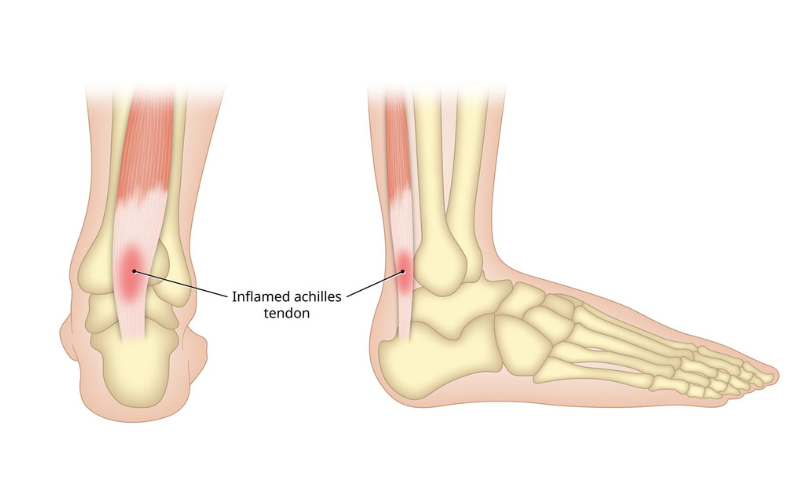 Achilles
tendonitis, also referred to as Achilles tendinitis, is a condition
characterized by inflammation and irritation of the Achilles tendon. This
tendon, the largest and strongest in the body, connects the calf muscles to the
back of the heel bone (calcaneus) and is essential for activities like walking,
running, and jumping.
Achilles
tendonitis, also referred to as Achilles tendinitis, is a condition
characterized by inflammation and irritation of the Achilles tendon. This
tendon, the largest and strongest in the body, connects the calf muscles to the
back of the heel bone (calcaneus) and is essential for activities like walking,
running, and jumping.
Causes of
Achilles Tendonitis:
- Sudden Increase in Physical
Activity: Rapidly intensifying the duration, frequency, or intensity
of activities that involve the Achilles tendon can lead to tendonitis.
- Tight Calf Muscles: Tightness
in the calf muscles can increase strain on the Achilles tendon during
movement.
- Improper Footwear: Wearing
shoes that lack adequate support or do not fit properly can contribute to
the development of Achilles tendonitis.
- High-Impact Activities:
Sports or exercises that involve jumping, running, or sudden starts and
stops can place stress on the Achilles tendon.
- Poor Biomechanics:
Abnormalities in foot or leg mechanics, such as overpronation or high
arches, can lead to additional strain on the Achilles tendon.
Symptoms
of Achilles Tendonitis:
- Pain: The most common symptom
is pain at the back of the heel or just above it. Initially mild, the pain
can worsen with activity and become more persistent over time.
- Swelling: The affected area
may become swollen and tender to touch.
- Stiffness: Stiffness and
limited range of motion in the ankle and calf muscles may be experienced,
particularly in the morning or after prolonged periods of inactivity.
- Warmth and Redness:
Inflammation of the tendon can cause the skin around the Achilles tendon
to feel warm and appear red.
Treatment
of Achilles Tendonitis:
- Custom Orthotics: Consider
using custom-made or over-the-counter shoe inserts (orthotics) to provide
support and address biomechanical issues contributing to the condition.
- Compression: Utilizing
compression bandages or wraps can help control swelling.
- Elevation: Elevate the foot
whenever possible to reduce swelling.
- Stretching and Strengthening
Exercises: Engage in gentle stretching and strengthening exercises
prescribed by a physical therapist to aid recovery and prevent future
occurrences.
- Immobilization: In severe
cases, a walking boot or cast may be necessary to immobilize the foot and
ankle, allowing the tendon to heal properly.
Implementing
these treatment strategies can significantly alleviate discomfort and support
recovery for individuals suffering from Achilles tendonitis.
 Achilles
tendonitis, also referred to as Achilles tendinitis, is a condition
characterized by inflammation and irritation of the Achilles tendon. This
tendon, the largest and strongest in the body, connects the calf muscles to the
back of the heel bone (calcaneus) and is essential for activities like walking,
running, and jumping.
Achilles
tendonitis, also referred to as Achilles tendinitis, is a condition
characterized by inflammation and irritation of the Achilles tendon. This
tendon, the largest and strongest in the body, connects the calf muscles to the
back of the heel bone (calcaneus) and is essential for activities like walking,
running, and jumping.